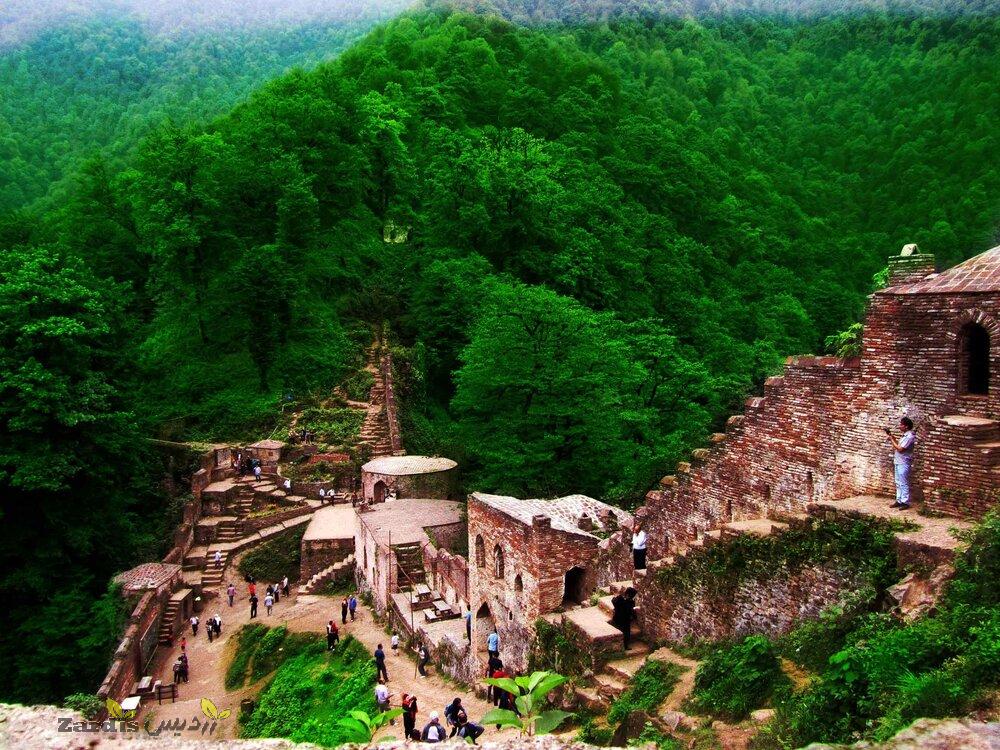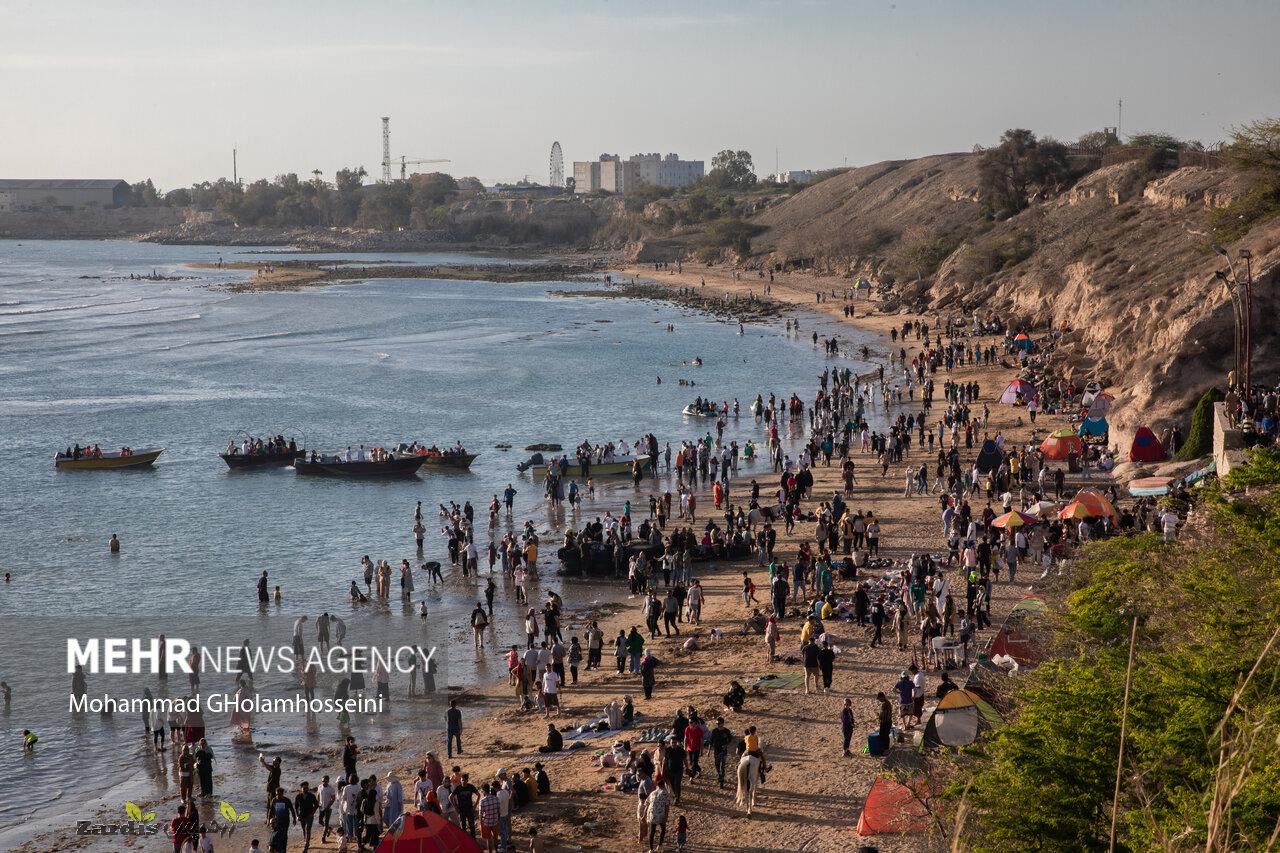TEHRAN – The lush green Gilan province, bounded by the Caspian Sea and the Republic of Azerbaijan on the north, is one of the most picturesque places to visit in Iran.
Gilan favors from mild climate and stunning landscape such as sea, dense timberlands, waterfalls, plenty of flowing rivers, green gardens, and the forested coastal plains rise up quickly into the Alborz mountain range. Rasht is the capital city of Gilan province.
Local authorities expect to maximize sustainable employment of rural households by the means of expanding tribe tourism across the northern Iranian province. In this regard, a committee of experts was formed last year to formulate effective factors in the sustainable employment of the rural population under an accelerated development of infrastructures linked with nomadic tourism.
In 2019, Gilan was selected as the first province to start the country’s comprehensive tourism plan, which is being developed under the auspices of the United Nations World Tourism Organization (UNWTO). The comprehensive plan is aimed to serve as a roadmap to guide tourists from all over the globe to achieve a sustainable and competitive tourism market.
Over the past couple of years, tribe tourism has gained a lot of support and attention in the country by both the government and the private sector, as well as sightseers and local communities. Many tour operators believe that tribal regions could be deemed as the legacy of human authenticity in its novel cultural and human aspects. In Iranian culture, literature, and public opinion, nomads have always been a proud part of the nation.
Iranian nomads surprise visitors with the dignity in their rough and overworked hands and integrity in their compassionate eyes at first sight. Migration is a way of life for nomads because herding cattle is their main source of income. In spring they with all their belongings head for the cooler pastures usually in mountain hillsides where the grass is abundant for their flocks of sheep and goats. And in autumn they return to previous tropic plains as their well-fed livestock getting stronger to bear the winter.
Accompanying nomads during their migration, even for a day or two, maybe a lifetime experience. As a traveler, one has the chance to visit, live, eat, and sleep in a nomadic camp with a real nomad family. Colorful dresses, vast black tents, colored-eyed children with rosy cheeks, modest lifestyle, scenic landscape, and local dishes are probably among the delights of such visits.
Language, music, indigenous cuisine, clothing, songs, anecdotes, crafts, live performances, and local rituals such as celebrations and wedding ceremonies have always spurred many to experience life among the tribes.
Gilan was within the sphere of influence of the successive Achaemenian, Seleucid, Parthian, and Sasanian empires that ruled Iran until the 7th century CE. The subsequent Arab conquest of Iran led to the rise of many local dynasties, and Gilan acquired an independent status that continued until 1567.
Best places to visit in Gilan province:
Rudkhan Castle
Some 50 kilometers southwest of Rasht, in deep green and temperate rainforests of Gilan, well-preserved Rudkhan Castle or Qal’e Rudkhan in Farsi overlooks the lush woods with the streams cascading down the mountain. Some historians say the construction of the castle dates back to the Sasanian era, over 14 centuries ago. But it has been renovated around the 10th century during Seljuq dynasty.
The castle is built from stone and is famous for about 1000 stairs which get you to top of it, then prepare yourself for a 50-minute steep trekking and wear your hiking shoes. Climb up to have a great view of the fortress and its surroundings. There are vendors and shops along the way where you can have snack and else. If you want to feel the mysterious atmosphere of this intact ancient castle, visit it on a foggy day. You can also enjoy plenty of traditional food and drinks along the way.
The Jelveh building
A cultural heritage building’ is Rasht’s first private high-rise and identifiable landmark, erected circa 1931, with its distinctive French-Russian architectural.
Shahrdari building
The Shahrdari building is the Rasht’s most identifiable landmark. its colonial style tempered by a token mini-dome topping a distinctive whitewashed tower. It looks great when floodlit at night
The Rasht Museum
The Rasht Museum is somewhat tiny, but well presented in a 1930s house. Its mannequin displays illustrate Gilaki lifestyle, amid a selection of 3000-year-old terracotta rhyton drinking horns in the shape of bulls, rams and deer. Supping from such vessels supposedly endowed the drinker with the powers and skills of the animal depicted
Rasht Grand Bazaar
Rasht Great Bazaar is the heart of the economy in Gilan province and is located in the old texture of Rasht. The bazaar dates back to the Safavid era (1501–1736). Unlike similar traditional bazaars, it is not covered and has no ceiling domes or lightwells. The bazaar has maintained its traditional appearance throughout the years and is still a place where agricultural products, different fish, local foods and handicrafts are sold.
Anzali Lagoon
Anzali Lagoon is one of the most stunning natural attractions of the northern Iranian province of Gilan. The lagoon, which is actually a wetland, divides the city of Bandar-e-Anzali into two parts and is considered to be one of the best locations for bird watching. That is to say, until 2012, around 187 bird species have been observed and recorded here.
It is also home to more than 80,000 wintering birds such as ducks, geese, swans, and coots. This astonishing wetland is surrounded by paddy fields and fish ponds and about two-thirds of the whole lagoon is covered by reeds.
Guilan Rural Heritage Museum
Showcasing traditions and customs give you the opportunity to explore the rural living environment and even take a picture local clothes. You can also buy handicrafts or even have a piece of hot flat bread. There are coffee shops and restaurants in which you can have a bite of Sour Kabob or Baqali-Qatoq. Many rural houses demonstrating the architectural style of the coastal or plain as well as mountainous areas of Guilan have been identified and subsequently, have been dismantled and reconstructed in the museum.
Visadar waterfall
Visadar waterfall, with 15 m high, is an impressive place located in a mountainous area and along a lush road. The surrounding rock cliffs are also attractive. Adventurous visitors can swim downstream from the waterfall.
Lake Saqalaksar
Lake Saqalaksar Lake is a unique place having a beautiful and calm nature where you can get relaxed and enjoy the silent atmosphere of the forest around the lake. There is also a cozy café beside this lake. The route to this place is scenic and picturesque as well.
Gisum Forest
Gisum is another tourist attraction and an area with a really beautiful nature in Gilan province, including forest and beach. You will depart from forest to the beach through a really amazing road in the heart of the dense Gisum Forest.
Masal county
The city of Masal is a countryside in lush highlands of Gilan province, it’s a relatively untouched spot in the nature of northern Iran. It’s hard to express its beauty through words. There is a really picturesque village in this region which is called “Olasbelangah” with lovely wooden houses. It’s also possible for Visitors to stay in hotel or local homes there.
Lahijan Lake
Lahijan Lake is an artificial lake at the foot of Sheitan Kooh in the city of Lahijan. It’s a green area with pleasant weather which is a great place for walking and family picnics and it has a friendly atmosphere. The mountain across from the lake (Sheitan Kooh) offers a great view of the lake and the whole city. There are also traditional cafés and restaurants around the lake.
Asalem-Khalkhal road
Asalem-Khalkhal is a dreamlike forest road and one of Iran most beautiful roads in the midst of foggy forests which connects Gilan province to Ardabil province. It is about 20 hours of hiking in forests and mountains, but it should be accompanied by an experienced guide. Visitors can find hostels on this way. Best time for going to this area is summer. Read more…
Subatan
The countryside of Subatan is a dreamlike lush land amongst mountains. Although reaching to this hidden paradise is tough, it’s absolutely worth all the effort. There are lots of things to see and enjoy, including rural cottages and groups of horses. This place is also near to exquisite Neor Lake and Talesh Forests. It’s suggested not to go there in cold months.
Boujagh
Boujagh is a wetland (national park) by Sefidrud river. It is home to over 200 species of birds that come from different parts of the world to this place every autumn. Besides birds, there are groups of horses and fishermen in their boats. Visitors could see many stunning views there, especially in spring.
Laton waterfall
Laton is the highest waterfall in Iran (105 m high) near to the city of Astara. For reaching to this attractive waterfall, you should pass through beautiful dense forests in highlands which it takes you 4 hours.
Heyran pass
Heyran pass which connects Astara to Ardabil is the most beautiful road in Iran. This road passes among mountains, forests and green lands and you will be enchanted by its exquisite scenery. The gondola lift is 1,500 meters long through beautiful landscapes of Alborz mountain range, there are really wonderful views of foggy lush highlands.
Chamkhaleh beach
The best beach of Caspian Coastline is the sandy Chamkhaleh Beach which is a great and peaceful place for swimming or sun tanning. You will also enjoy watching wonderful view of the sea, and unforgettable sunrise by the sea from this lovely beach.
AFM
Zardis news | The latest news of Iran and the world
All rights reserved for "Zardis news"It is protected and any copying without mentioning the source is prohibited.
Pursuant to Article 12 of Chapter 3 of the Cybercrime Law, copying the format and content will be prosecuted.







